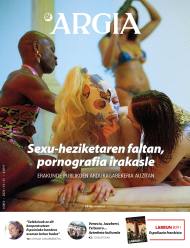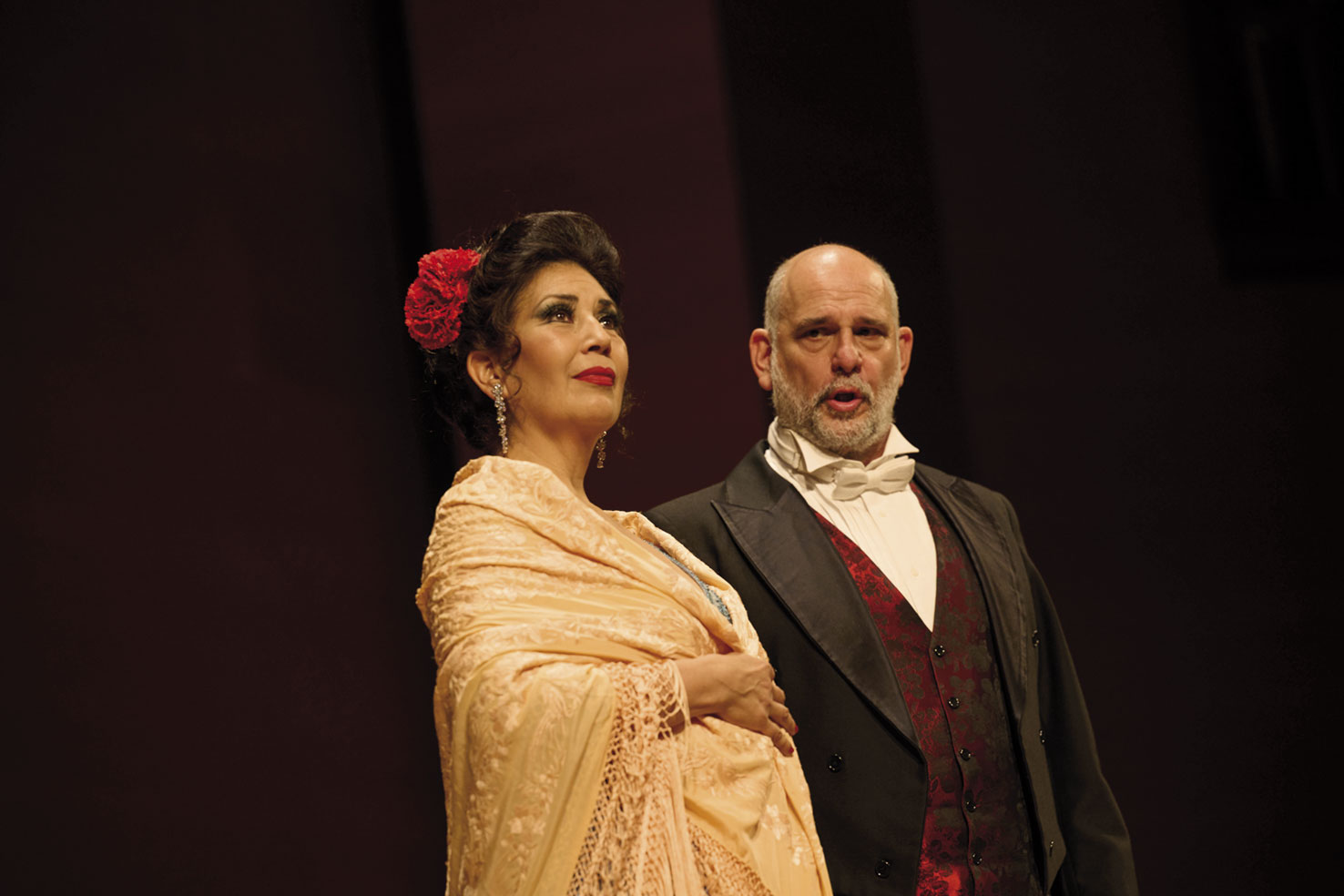A trip through lost party halls
- In the mid-1990s, when the influence of the long shadow of the Basque Radical Rock was still evident, the cultural phenomenon that marked on the Valencian coast a stage in the history of electronic music and nightlife, known as the Bakalao Route or Destroy Route, came to Euskal Herria. This subculture associated with techno music, house and trance found her house in old nightclubs, industrial ships and alternative spaces. Today there are only remains of all this. Remains and castles built in the air with the force of nostalgia.
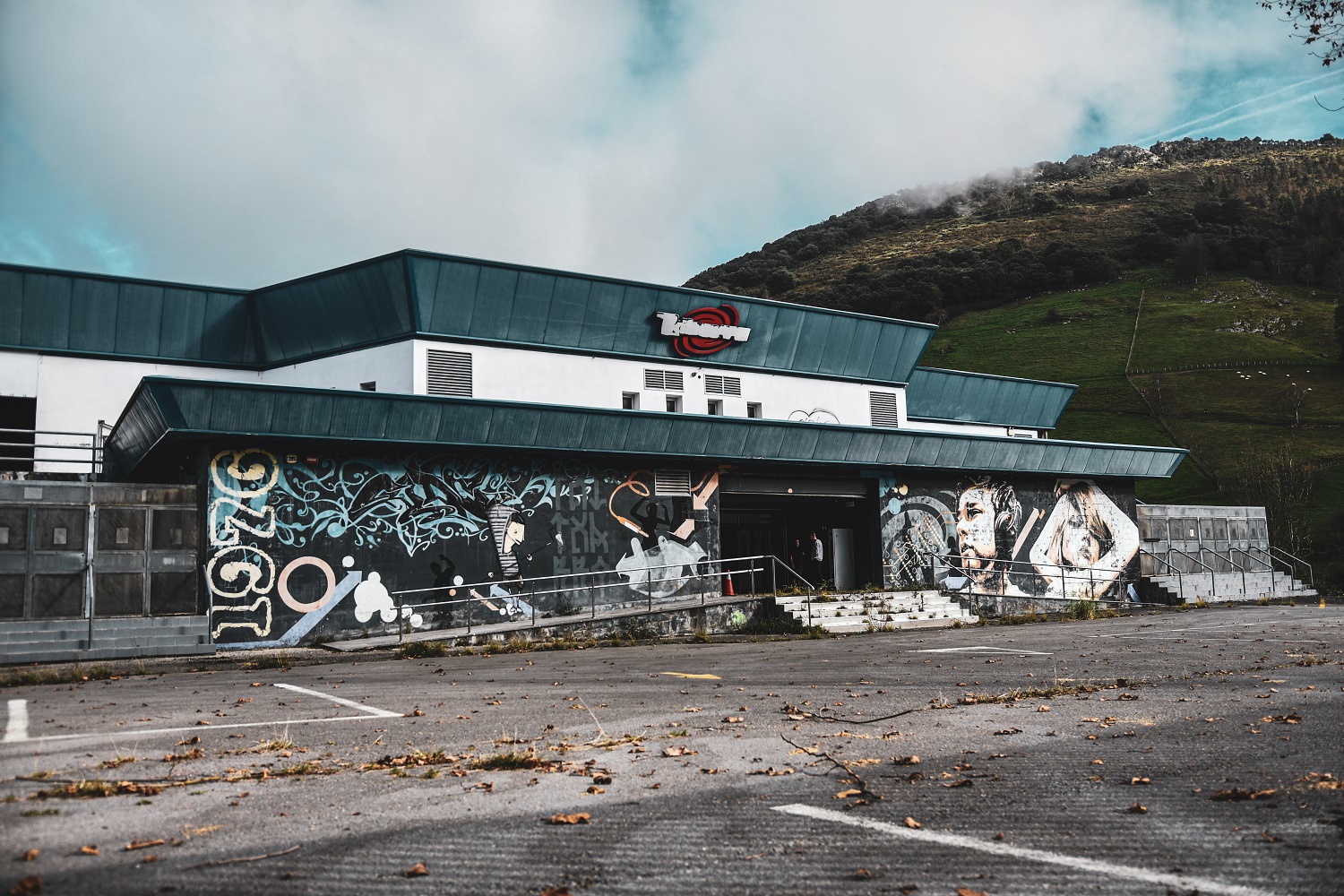
Report on the influence of this dance culture in our country and the conflicts that emerged around it, disco-TEKA, organized by the Mugak Biennale. The temples of bumping with the days on the Gipuzkoan coast.
N-634: multiple roads
The bus takes us along the road of the Gipuzkoan coast, from the discotheque Venice, between Ondarroa and Mutriku, to Txitxarro, in Itziar. On the way we will stop at Jazzberri, at Arroa Behekoa. This road was the main artery of the Bakalao Route of the Basque Country in the mid-1990s. In addition to these are Young Play by Hernani, Universal de Lakuntza, NON de Lemoa, Nyx de Gorliz, Columbus de Bilbao, etc. A long list that reflects the success of this cultural phenomenon in our country. Today there are no dances, no strobe light, no vision of the transition between the sun and the moon that offers a parking. We are on a march organized by the Mugak Biennale, through the temples of Euskal Herria, which was called Bakalao music.
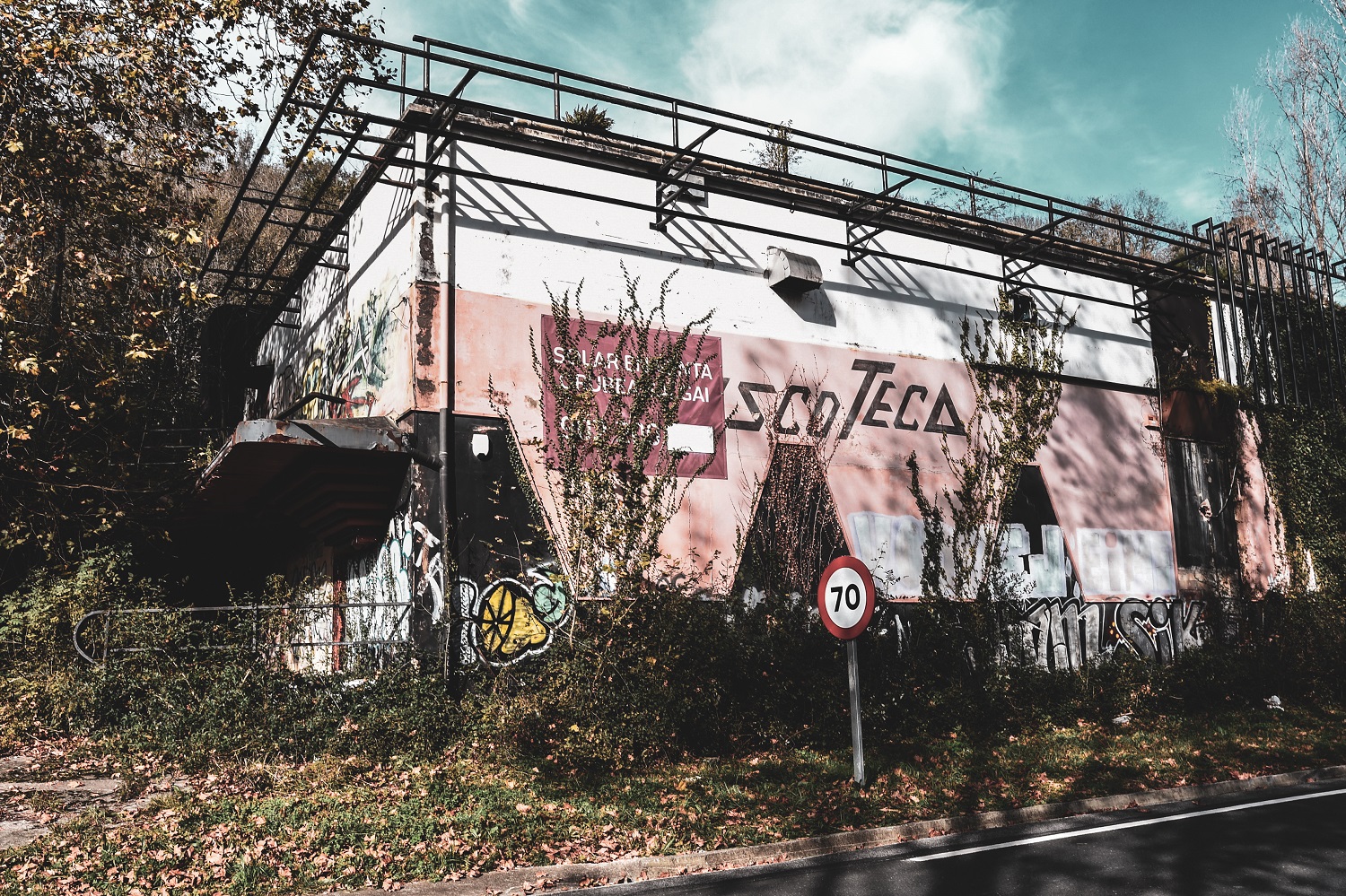
As architecture is biennial, they have linked the perspective of the itineraries and conferences organized with this discipline. Thus, the peculiarities of the leisure and dance architecture have been analyzed. David Bestué explains that it reflects the optimism of the past. The Catalan woman points out that the dance halls are related to the positivism of the time before the economic crisis and are a compliment to the future. The design of the rooms included the specific needs of leisure, music and dance, as well as social relations. The architect and artist Pol Esteve has defined the surround architecture of the dancing bodies.
Maria Langarita stresses the importance of geography. Although in his research he has studied the Bakalao Route of Valencia, this applies to the Basque case that a transgressive leisure needs a spatial distance. The most interesting, the most dangerous thing, has always happened in marginal areas. In Euskal Herria, as in Valencia, the holiday rooms were installed mainly on the coast road. What was initially a claim to attract tourists who concentrated on the beaches were the refuge of those who wanted to dance, enjoy and solve in secret. The N-634 had left behind its glorious times in favor of the modern A8 motorway. That was the Bilbao-Behobia, the road that had to unite Euskal Herria with the future. Thus, the expansion of the N-634 highway allowed the parties to have a different leisure. Occupying a conflict zone, they managed to reveal the territory in the face of the superiority of productivity.
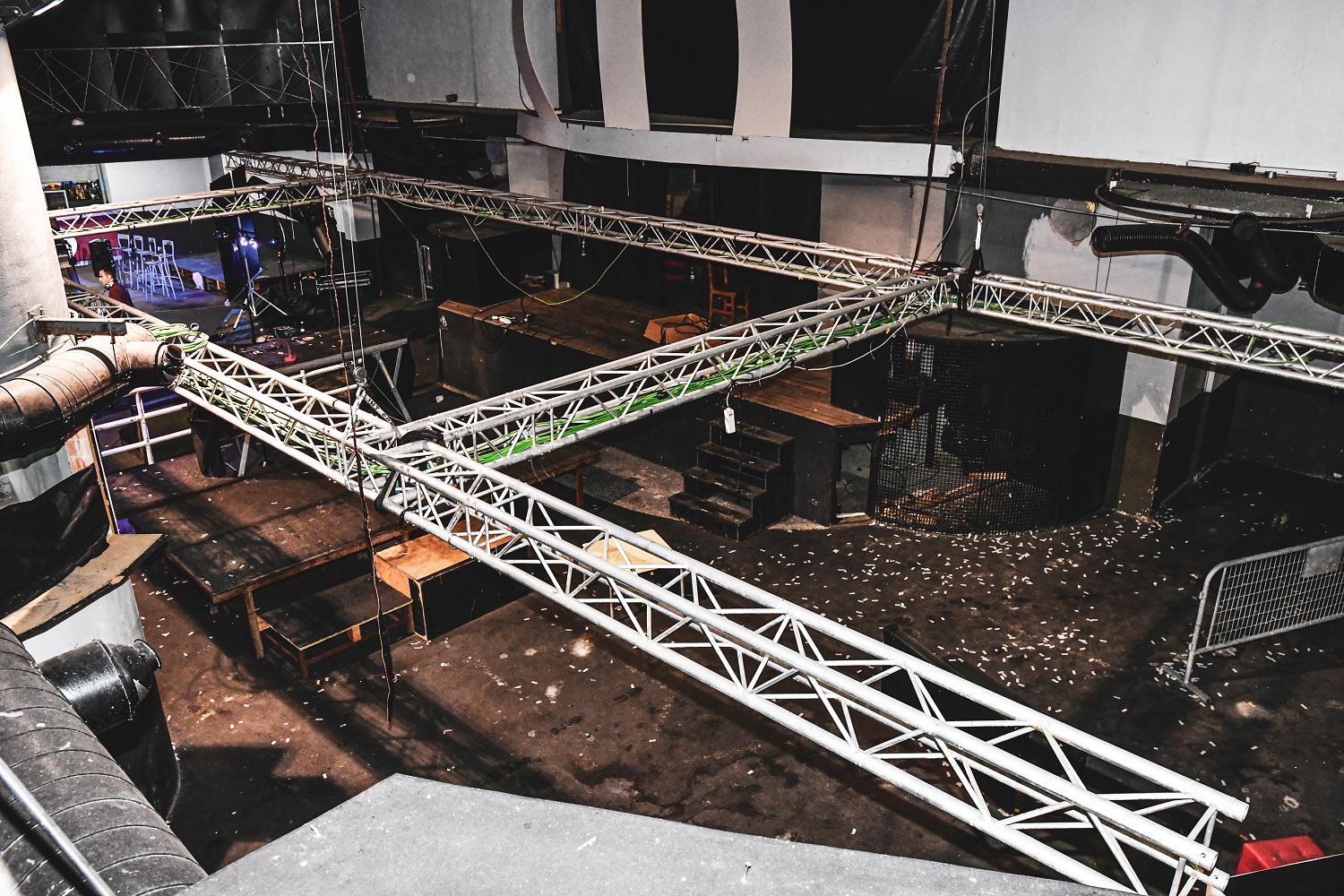
Fernando Castro highlighted in his intense talk that nightclubs are also spaces of social control. Those who do not sleep are said to be stealing their workforce and that is why these people must be controlled and disciplined. Therefore, these spaces were also used to establish negative catalogs, “zoologization”, in the words of Castro. In this way, the parties rooms became opaque boxes for the degenerate, containers for the ginger to be raked.
Enter the rabbit den
In Arroa Behekoa, between Zestoa and Zumaia, a door has been opened that has been closed for years. No light inside, except the one coming out of the mobiles we've introduced. We have a sense of having plunged the butt into a hole. The waste has long been vivid with the colors off the walls and the pounds of trash. Here, a long time ago, there was a party hall called Jazzberri, in which every weekend thousands of young people met to get rid of the hardship of working week or unemployment. Dancing, strongly hitting the ground, as if they were kicking into the alienation of the working world.
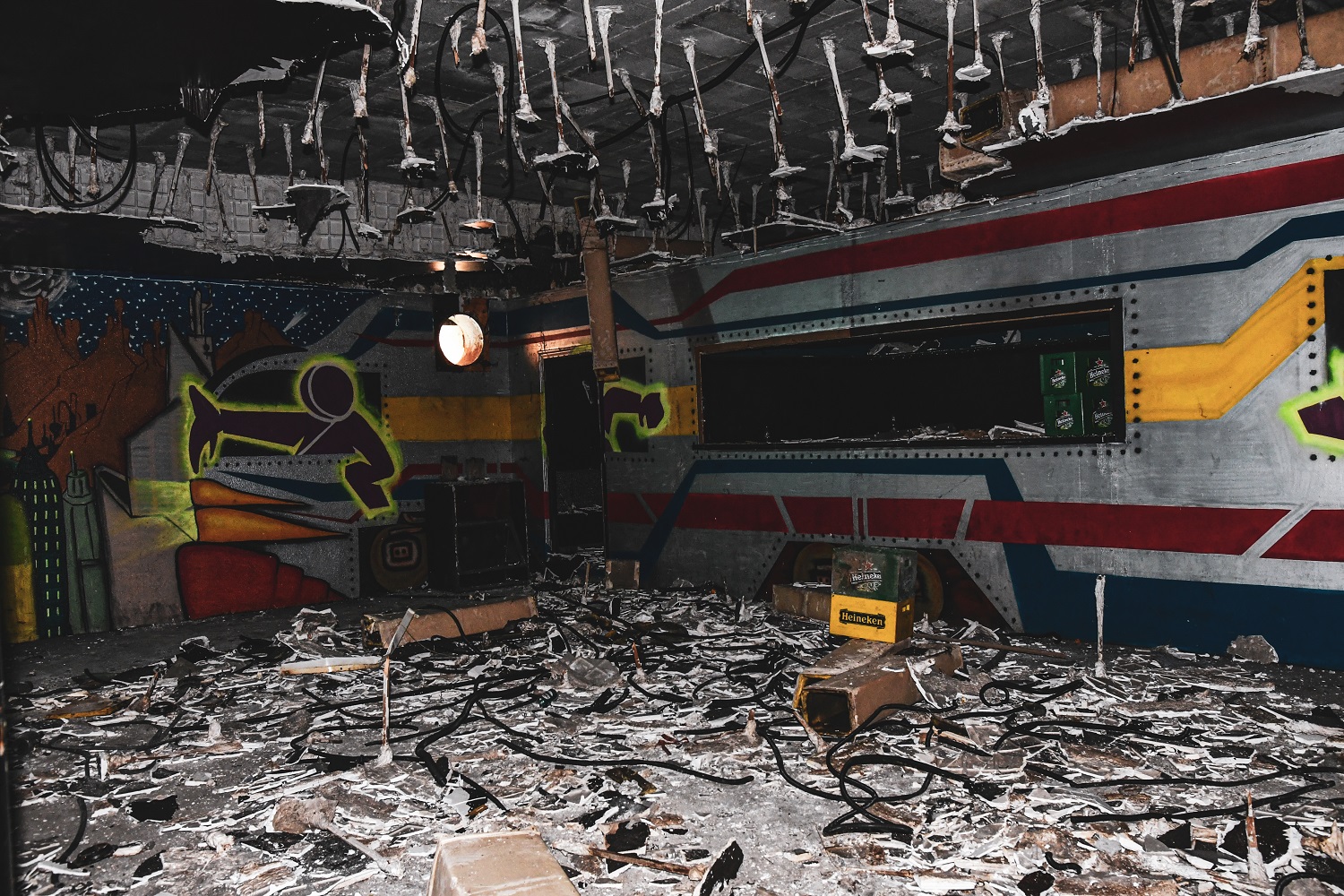
In Lewis Carroll's book Alice in Wonderland, Alice follows the White Rabbit and falls into the burrow. The story represents the transition to the unknown of the protagonist, a journey so initiatic or transformative. This action symbolizes the abandonment of everyday reality and the entrance into an imaginary kingdom. The writer Alana Portero, in her text Rave in Wonderland, confronts Alice's journey with rave culture. According to the Madrid writer, those who accessed the holiday rooms went through a portal. There they freed themselves, danced fascinated and resurrected at dawn, becoming completely different people.
Night can also be a political concept. Night is not just a free space to release hedonistic pulsions. Thus, the audience of the first discotheques of the 19th century was made up of members of the labor movement: anarchists, communists, trade unionists, etc. The party room is not just a dance area. They are also spaces of subversion and counterculture, creation and liberation. Dantzaleku is also a refuge for perversion, as nightclubs, sheltered by dance and night, help to erode bodies against capitalist discipline.
Dantzaleku is also a refuge for perversion, as nightclubs, sheltered by dance and night, help to erode bodies against capitalist discipline
In one of the conferences organized by the biennial Mugak, the philosopher Fernando Castro has masterfully explained the liberating role of dance halls. For him, the parties are an escape instrument, a space for the excitement and agitation of the workers. Surrounded by a musical sound, when darkness is broken by a blow of light, the worker becomes a dancer and immerses himself in an ecstasy state. Castro points out that nightclubs are a drug against the diseases of depressive society, headlights that cross the dark and allow them to escape control.
Media communism
This music has been labeled depoliticized. In view of the traditional ways of making music in the Basque Country, the culture derived from techno music was accused of promoting hedonism and depoliticizing youth. Without words – because there are hardly any spoken words in this type of music – it was difficult to give a political air. But, as the Situationists said, the key was not to make situationist art, but to integrate situationism in the way of making art. Art historian Nicolas Bourriaud understood this when speaking of DJ as a communist culture of cultural media.
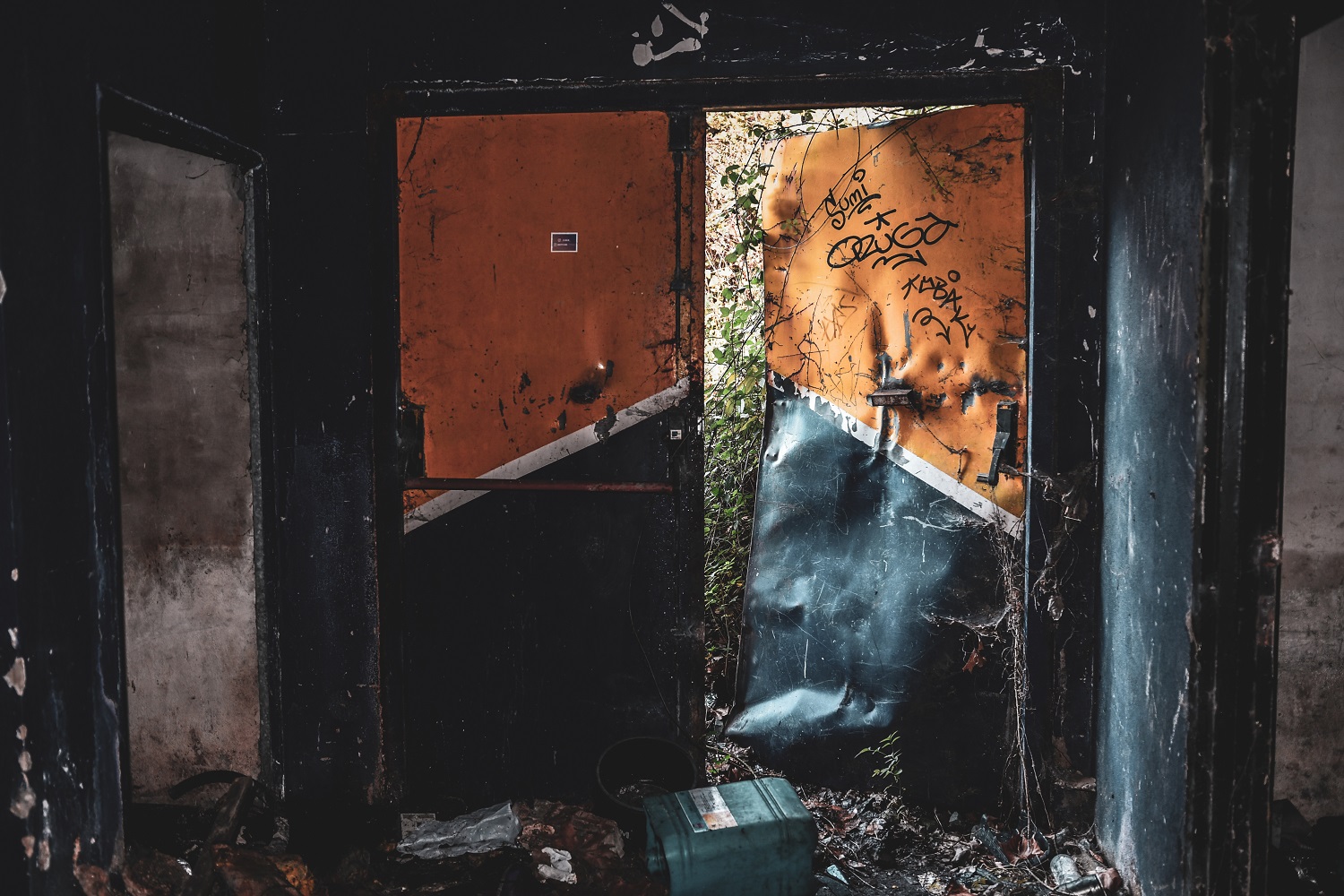
According to Marxism, according to Bourriaud, there is a relationship of exchange with the production instruments created by civilization, and techno took these products and used them to make music. Coupled with this idea, journalist Aryel Kirou defended in Techno rebelle (Denoël, 2002) that the true revolutionaries, faced with the contempt of all, are those who use the machines to musicate and overcome them. Techno was a horizontal music that, besides breaking with the music/listener binomial, totally liberated the way of making music. Rhythmic boxes allowed the storage and transmission of sounds. They were copy/paste tools. Techno went beyond punk. It was no longer necessary to have an instrument. Just to create music, one needed previous music from another. It is enough to “samplear” fragments of other songs to create nuevas.Así, according to Bourriau, an infinite continuum was established. According to Japanese musician Ken Ishii, “the history of techno music is similar to that of the Internet. Now anyone can compose infinite music. These music increasingly fragments in different genres according to their personality. Everyone will be filled with different and personal music that will give more inspiration.”
But to the culture of nightclubs, techno, etc., what happened to any other cultural expression, which could not escape the fagotisation of capitalism and marketability. The eroticization of bodies became another form of oppression, according to Pol Esteve. But not only that. The overflow of roads, parking lots and nightclubs made the hedonistic dream a nightmare. You had to sell tickets and alcohol, people had to consume it, and music sessions started to depend on commercial interests. Transgression and experimentation began to be abandoned under the false bright glow of the DJ stars, becoming music an unbearable thing that remained in the background.
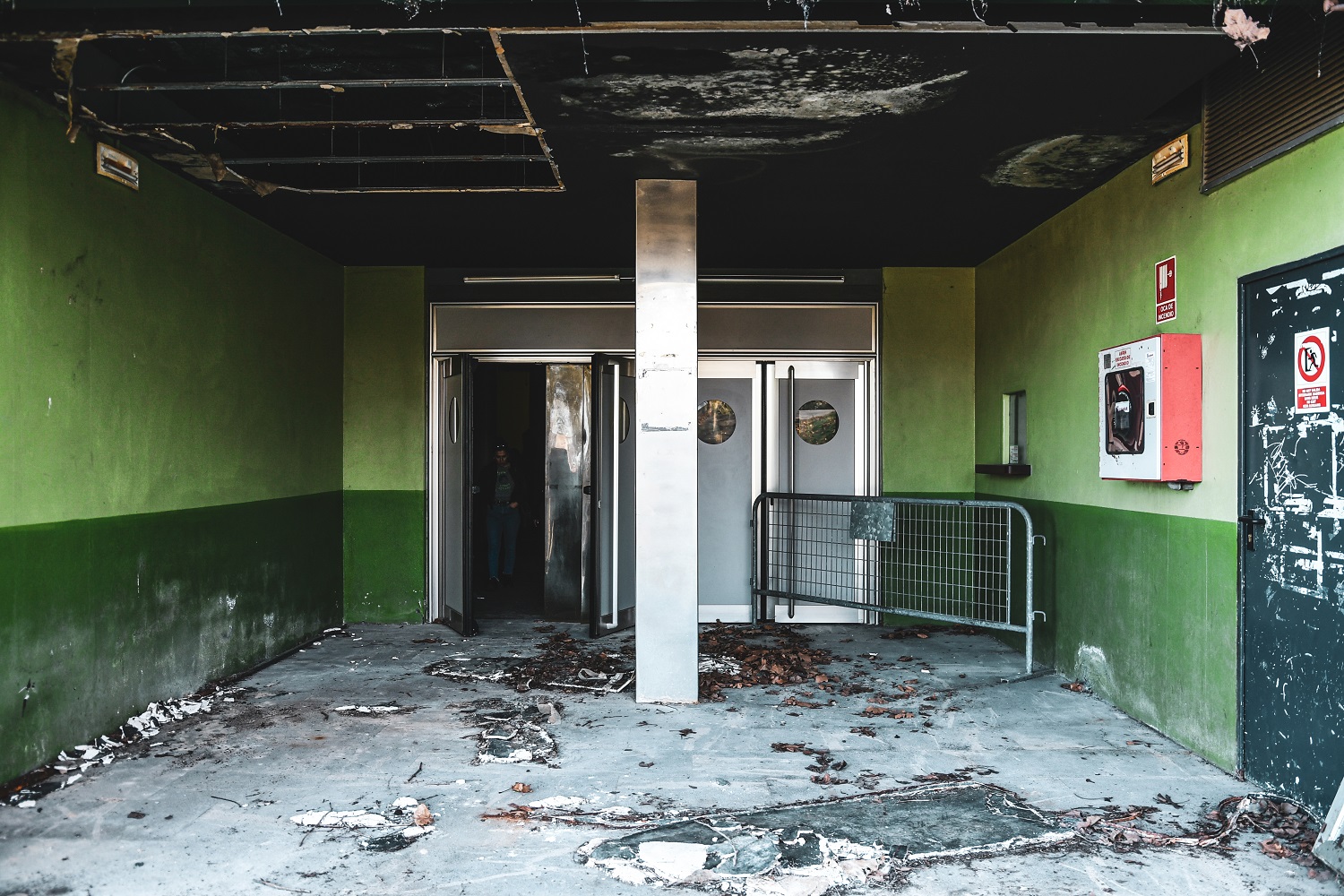
This was not our style.
On 10 September 2000 an explosive erupted at the Txitxarro nightclub in Itziar (Gipuzkoa). In a statement published 12 days later, ETA took over this action. The armed group justified the attack by considering that the local was “an important eye” of a drug trafficking network that extends throughout the Basque Country. He put the bomb in the central column and destroyed the interior of the building. But the perimeter remained standing.
The diffusion of what was known as Bakalao music clashed with cultural and leisure expressions deeply rooted in the Basque Country. In the alternative spaces, castles or free radios, the rejection of this musical style was widespread and has had to travel a long and full of obstacles to be accepted. The attack on Txitxarro was a turning point and further removed the two worlds.
Far from romantic and idealization, we have to recognize that this culture had a lot of pure hedonism. But we also have to recognize that from different areas on the left all this was despised by misunderstanding.
One of the organizers of the Biennale has pointed out three points of conflict: the alleged Spaniards' clients, who were drug trafficking areas and alienated youth, and that the members of that culture were a polygon of the crowd. The first reason does not match that of Iker Rodriguez Cordero, who was as DJ Itzelan of Oiartzun. He says that the people moving in Txitxarro were around, especially Euskaldun. The same would happen in the aforementioned Tremendous, Jazz Berri or Venice. He, like other young people of the time, began to follow a musical style existing in the bogie and joined the associated subculture. On the other hand, drug use in leftist spaces is unquestionable. Also alcohol per liter, whose relationship with alienation cannot be neglected. Concretizing the real causes and motivations of this conflict would require a long and deep debate that does not have enough space on these pages.
End of travel
“The artists like nightclubs when they are closed, empty. They're always late." These are words of Fernando Castro. So we felt some of the ones we were on the bus, we arrived late. That with this tour we have realized the museification and exotization of an unknown past and an aesthetic and culture rejected. For many, the young people who occupied the parking lot and the holiday rooms were “people”, away from political music and lost in pure hedonism. The canons, the chopsticks, were stigmatized as the apolitical garbage, with a borrowing look of classism.
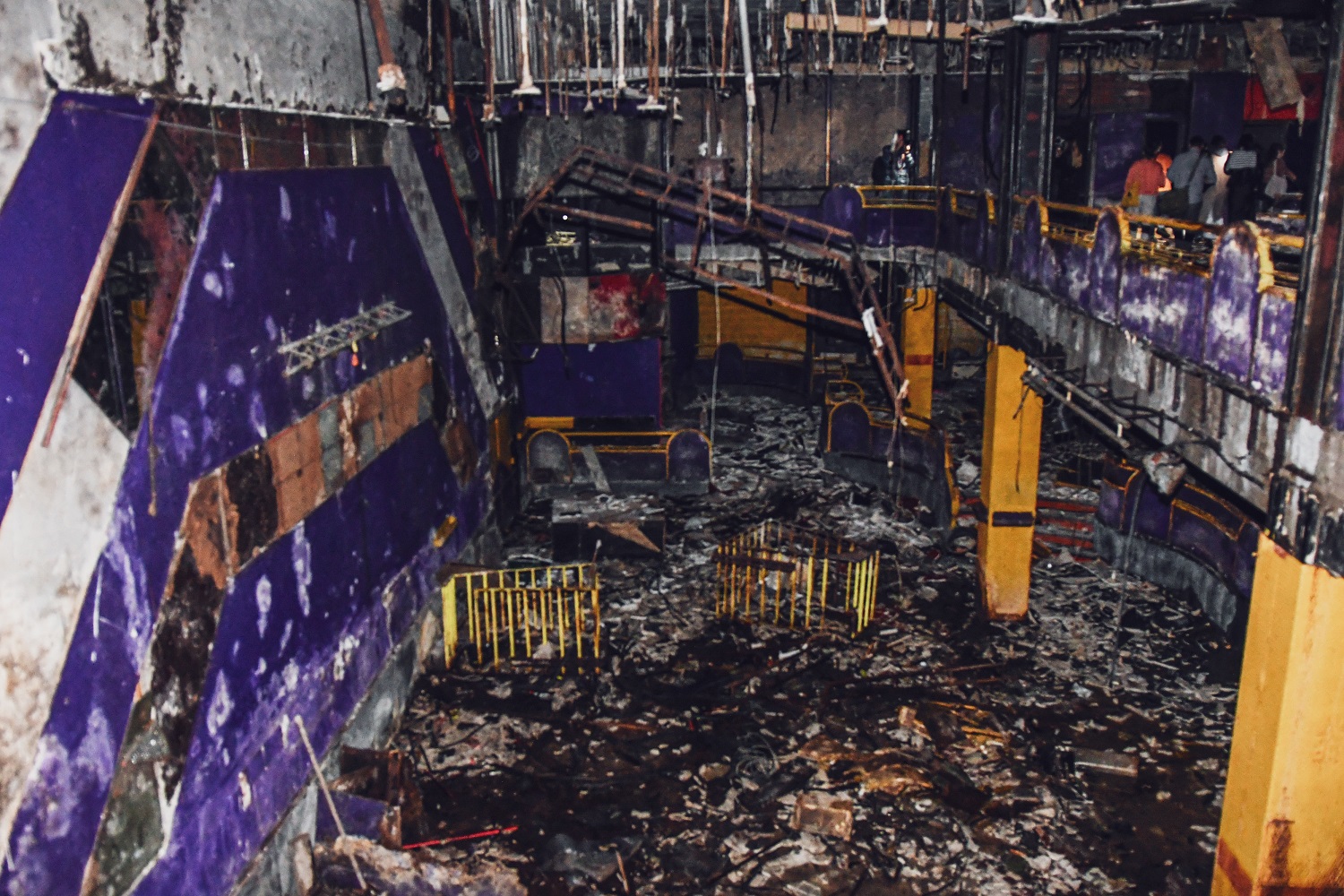
Far from romantic and idealization, we have to recognize that this culture had a lot of pure hedonism. It was closer to alienation than to transgression, as it was a cross-cultural expression almost from the beginning by the dynamics of capitalism. But it must also be acknowledged that from various areas of the counterculture and the left all this was despised by misunderstanding. Because it was strange, because it felt far away. At the time, many of us did not see or understand the political strength of this subculture.
Now only waste remains. Waste and nostalgia. Now you have to leave old abandoned temples and imagine new media and forms of leisure and art. As Jon Urzelai, author of the book Sus festak, said, leisure management is the first step in life management.
Maite Aizpurua i Intza Alkain ens reben com si no hi hagués res més important a la porta del bar Taba. Pals que marquen davanteres o no deixen passar d'un costat a un altre a un costat i tu pel centre, com si estiguessis en la catifa vermella. L'important és tot allò que ho... [+]
Nola ezar euskara, gal-bidean, ahal-bidean eta zabal-bidean? Galdera horri ihardukitzen entseatuko da Mattin Irigoien Zabalik elkarteko kidea, ostegun honetan eskainiko duen mintzaldian.
Com és habitual en les últimes temporades, l'ABAO ha preparat un bonic recital per a l'últim títol de la temporada, que ha servit de preludi. La mescla d'òpera
i sarsuela ha estat una gran idea. Perquè molts creiem que no seria mala idea que
alguna vegada
s'inclogués... [+]







